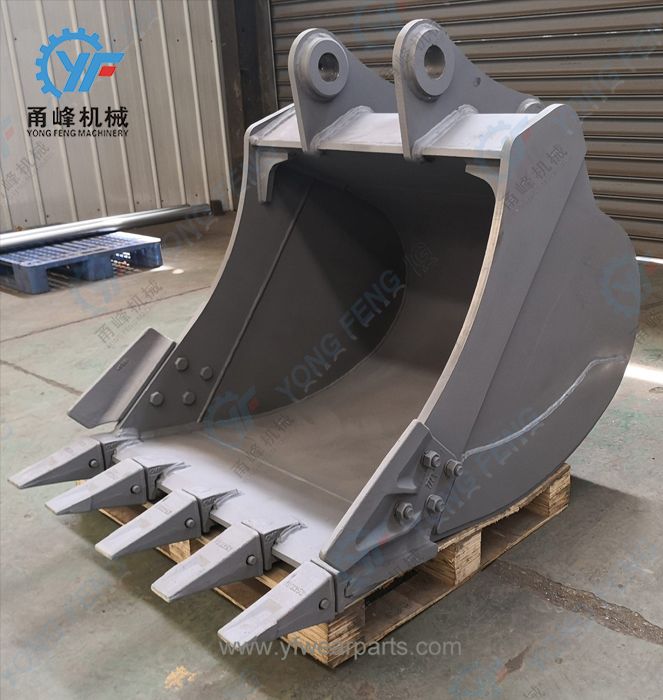An excavator bucket is a digging attachment with teeth that attaches to the arm of the excavator. The bucket is controlled by the excavator operator using the controls in the cabin. Different types of excavator buckets can be used depending on where the digging must be done.
Excavator buckets can also be used to move dirt or load dump trucks for transport to the dump site. Excavators are used for traditional trenching methods for laying pipelines and for digging test pits for geotechnical investigations.

Caterpillar CAT312 Bucket
Excavator buckets can be of different types:
These buckets are similar to digging buckets but have structural parts that have been reinforced. This allows the bucket to be pushed with greater power to break hard rock without damaging itself. They have long, sharp teeth and a narrow V-shaped cutting edge.
This is ideal for digging V-shaped trenches for installing utility cables and pipes that have to be installed at shallow depths.
This comes as a standard attachment with all excavators and is most commonly used. They have sharp blunt teeth that are ideal for topsoil excavation.
These buckets are made of heavy metal plates with gaps that allow for smaller particles to fall through. Ideal for separating coarse soil from fine particles.
These buckets are built for maximum strength and durability and are similar to a rock bucket. The difference lies in the ripping teeth attached to the back of the bucket that loosens compact earth while digging.
These buckets do not have teeth but have greater capacity than other buckets. They are used for scooping up soft soil and material. They are used for sloping, leveling and back-filling.